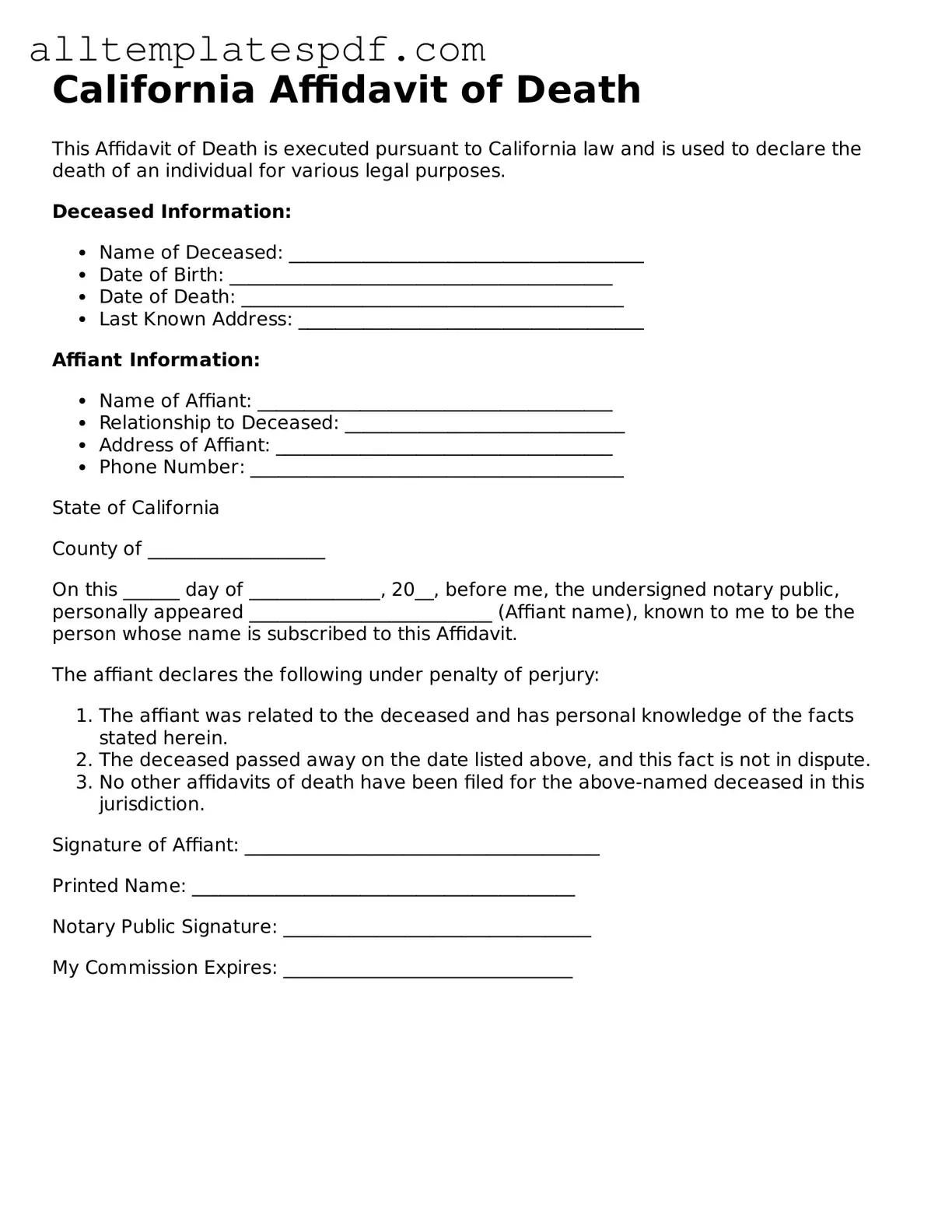Filling out the California Affidavit of Death form can be a straightforward process, but several common mistakes can complicate matters. One frequent error is failing to provide complete information about the deceased. This includes not listing the full name, date of birth, and date of death accurately. Incomplete information can lead to delays in processing the affidavit.
Another mistake often made is neglecting to sign the form. The affidavit requires the signature of the person completing it, typically a family member or an executor of the estate. Without a signature, the document is invalid and will not be accepted by the relevant authorities.
People sometimes overlook the requirement for notarization. The California Affidavit of Death must be notarized to verify the identity of the person signing the form. Failing to have the affidavit notarized can result in rejection, requiring the individual to start the process over.
Additionally, individuals may incorrectly assume that they can submit the affidavit without any supporting documentation. It's essential to include a certified copy of the death certificate along with the affidavit. Omitting this document can lead to complications in the estate settlement process.
Another common oversight is using outdated versions of the form. Laws and requirements can change, so it is crucial to ensure that the latest version of the Affidavit of Death is being used. Using an outdated form may lead to unnecessary delays or rejections.
Some people may also fail to provide accurate information regarding the decedent's property. The affidavit requires details about the property owned by the deceased. Inaccuracies in this section can create legal issues down the line.
Moreover, individuals often forget to check for typographical errors. Simple mistakes in spelling or numbers can lead to confusion or legal complications. Taking the time to review the form carefully can prevent these issues.
Another mistake is not understanding the implications of the affidavit. Some individuals may not realize that filing an Affidavit of Death can affect the distribution of the deceased's assets. It's important to understand how this document fits into the broader context of estate planning and administration.
Lastly, people sometimes fail to keep copies of the completed affidavit and supporting documents. Retaining copies is crucial for personal records and may be necessary for future legal proceedings. Without these records, individuals may find themselves in a difficult position later on.
